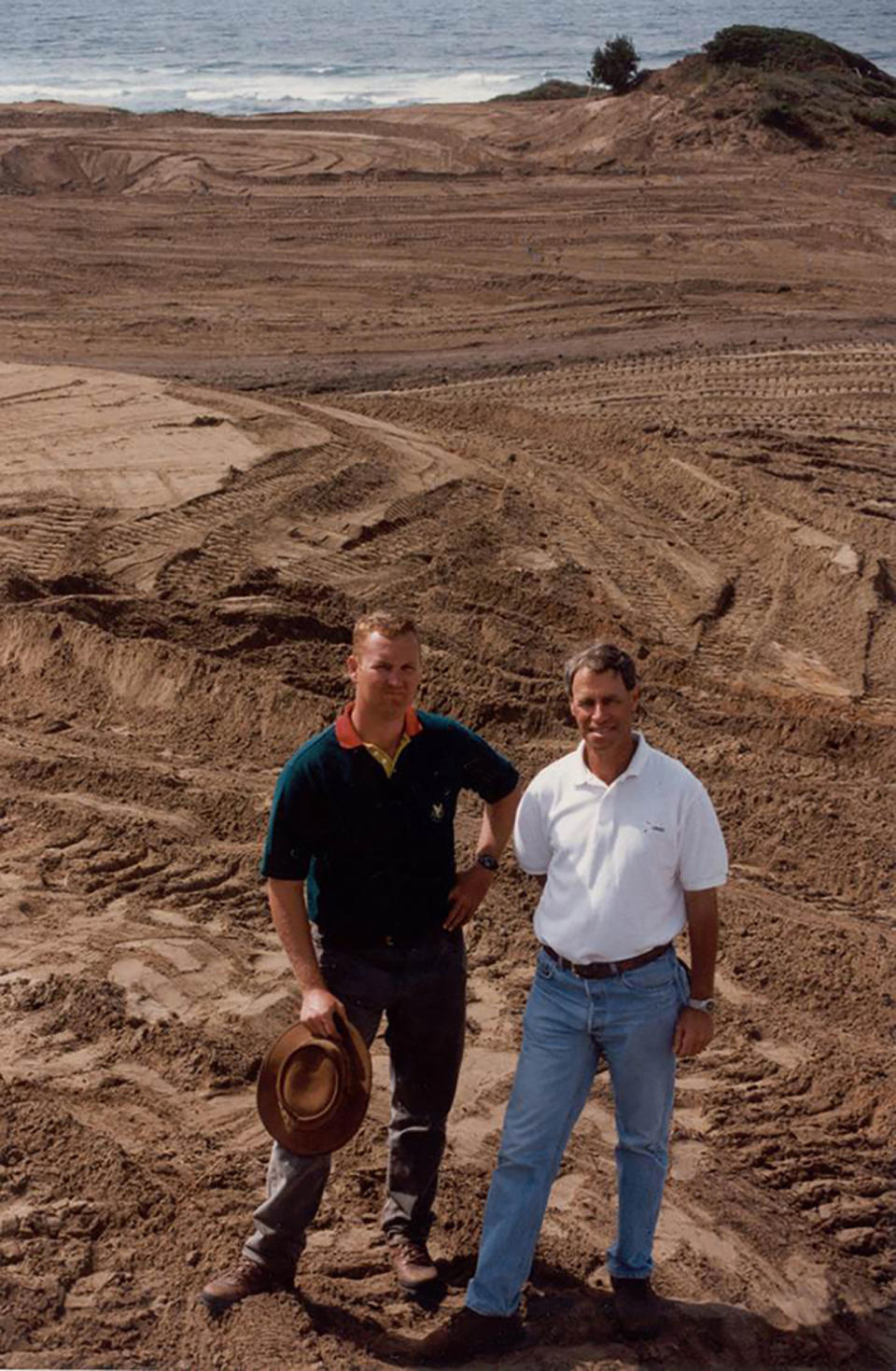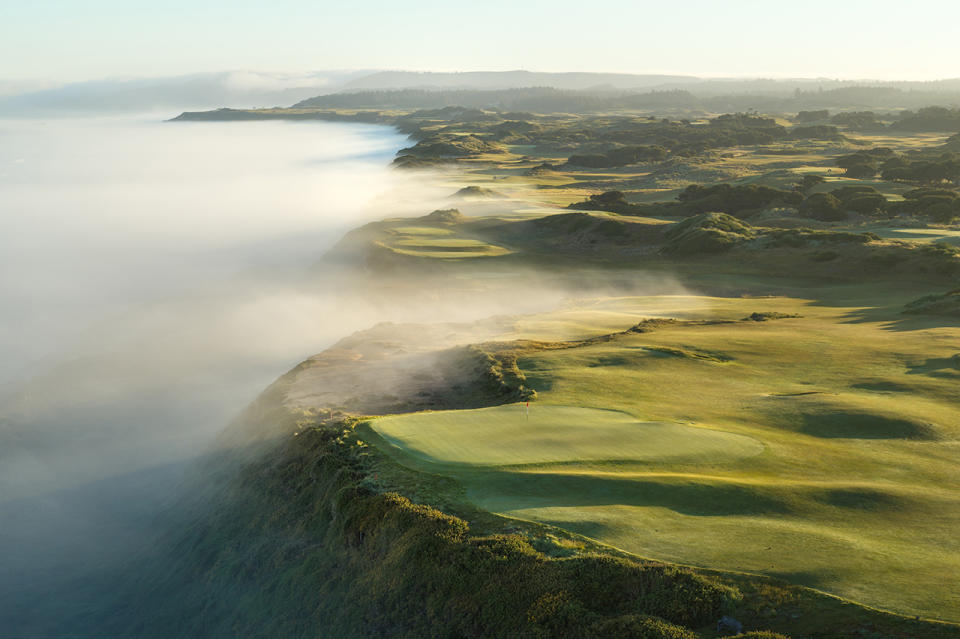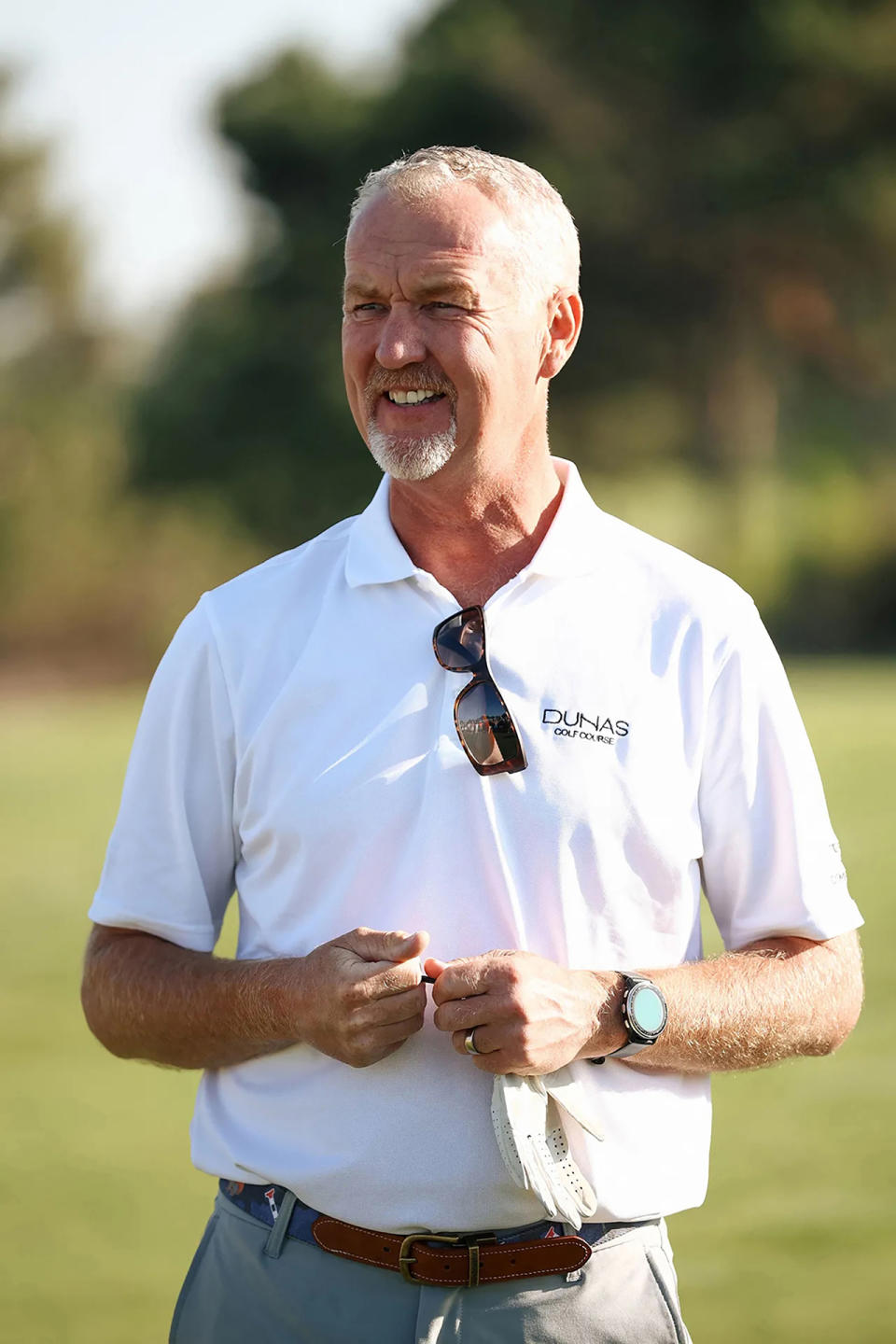Callaway Par-Tee Plastic Golf Tees, 10 Pack,White
$30.58 (as of July 27, 2024 04:49 GMT +00:00 - More infoProduct prices and availability are accurate as of the date/time indicated and are subject to change. Any price and availability information displayed on [relevant Amazon Site(s), as applicable] at the time of purchase will apply to the purchase of this product.)[3 Pack]Microfiber Golf Towels (40x40cm) with Carabiner Clip & Hook, Convenient Golf Cleaning Towel, Waffle Pattern Tri-fold Handy Picks Towel (Black+Blue+Gray)
$15.99 (as of July 27, 2024 04:49 GMT +00:00 - More infoProduct prices and availability are accurate as of the date/time indicated and are subject to change. Any price and availability information displayed on [relevant Amazon Site(s), as applicable] at the time of purchase will apply to the purchase of this product.)Costway Golf Stand Bag, Golf Club Bag w/ 8 Way Top Dividers, 7 Zippered Pockets, Cooler Bag, Dual Strap & Rain Hood, 2 kg Lightweight Portable Golf Carry Bag for Men Women
$94.95 (as of July 27, 2024 04:49 GMT +00:00 - More infoProduct prices and availability are accurate as of the date/time indicated and are subject to change. Any price and availability information displayed on [relevant Amazon Site(s), as applicable] at the time of purchase will apply to the purchase of this product.)[3 Pack] Heyus Anti-Slip Thin Elastic Black Sports Headbands Yoga Head Band Sweatband Sweat Band for Men and Women nisex-Adult
$9.99 (as of July 27, 2024 04:49 GMT +00:00 - More infoProduct prices and availability are accurate as of the date/time indicated and are subject to change. Any price and availability information displayed on [relevant Amazon Site(s), as applicable] at the time of purchase will apply to the purchase of this product.)Golf Green Slope Reader, Golf Ball Marker,High Precision Golf Putting Green Reader, Golf Putting Level Bubble, Golf Level Marker, Level Golf Accessories, Golf Putting aid for Indoor Outdoor
$12.98 (as of July 27, 2024 04:49 GMT +00:00 - More infoProduct prices and availability are accurate as of the date/time indicated and are subject to change. Any price and availability information displayed on [relevant Amazon Site(s), as applicable] at the time of purchase will apply to the purchase of this product.)(Editor’s note: Bandon Dunes Golf Resort is celebrating its 25th anniversary and Golfweek Travel Editor Jason Lusk put together a comprehensive package for the occasion, complete with Q&As of pivotal people in and around the operation. To see the entire package of stories, click here.)
BANDON, Ore. – David McLay Kidd got the break of a lifetime.
A mid-20s Scotsman in the 1990s, he had been around golf all his life, learning early from his golf superintendent father, Jimmy. He also worked as an in-house architect for a small English golf firm before moving to a larger group where he learned about the development process.
But he had never designed an entire golf course as a solo effort.
It wasn’t until Kidd somehow caught the eye of then-novice developer Mike Keiser in the mid-1990s, and after years of site visits and discussions and small-town hamburgers, that he landed the job to design the first course at a new destination, Bandon Dunes Golf Resort, on the remote shores of southwestern Oregon.
Named Bandon Dunes along with the resort, the first course kicked off a career in which Kidd has designed more than 20 courses around the world, several of them earning high praise from various course rankings including Golfweek’s Best.
One of the game’s best storytellers, Kidd takes a look back at how it all came together as Bandon Dunes’ 25th anniversary approaches.
Bandon Dunes
David McLay Kidd and Bandon Dunes developer Mike Keiser during construction of the first course at the Oregon resort (Courtesy of Bandon Dunes Golf Resort)
What is your memory from the first time you saw Bandon Dunes?
It was July 1994, and I was with my father (Jimmy), who was a longtime golf course superintendent in Scotland. We were invited by Mike Keiser to go look at the land and come up with a concept for 36 holes. My dad and I spent a week there, and then at the end of the week, Mike flew in with Steve Lesnik, the founder of KemperSports, and (land planner and architect) Howard McKee and a few others.
And my dad and I, but probably mostly me, presented our ideas for 36 holes at what at that time didn’t even have a name, just the land north of Bandon the town.
I had gone around with (caretaker) Shorty Dow, who lived on the land. I can remember it like it was yesterday. Initially, Mike was thinking of building down below what is No. 16 on Bandon Dunes, below 17. That was where Mike was really thinking of, because that reminded him the most of, you know, an Irish links. And I remember wandering through that land (along the beach beneath the cliff), and it’s filled with driftwood. And of course that rang giant alarm bells with me. When there’s a storm there, the sea water comes right up in there. When I did meet Mike at the end of the week, I said to him, “You know, there’s giant stumps and driftwood back in there for quite a ways. It might not be the best idea to build out there.”
What did you think of the land that you did get to work on, up on the top of the shelf above the cliffs?
Well, you couldn’t see any of it. It was all under gorse. The whole entire thing, every last bit, was under gorse. So all you could really do was try and imagine what was there.
But we knew, looking at the surroundings and the few pieces of the trails that went through there – a bunch of people had been riding four-wheelers and motorbikes through it – that it was all sand. I sort of assumed that underneath the gorse there were some cool shapes, but you really couldn’t tell, not the very first time.
You were a young architect back then, and you were working for a man who was inexperienced in building a resort. Was there any apprehension in taking on the project, or was it all excitement to get a chance like that?
It didn’t happen like that. I didn’t know shit, and neither did Mike really, you know. I don’t know if anybody had any expectations.
From my point of view, I didn’t know that Mike was talking to a bunch of other people (as architects). From Mike’s point of view, I think he had this wild idea that he hoped he wouldn’t lose his shirt on – if the thing broke even, that was the best he could hope for.
One of the things I’ve said so many times in the 25 years since Bandon opened, when people have asked what was it like working on Bandon Dunes, it’s so hard to explain. But it wasn’t Bandon Dunes then. It wasn’t anything. It was a gorse-covered piece of maybe sand dunes on the edge of nowhere.
Bandon Dunes
Bandon Dunes, the original and eponymous course at Bandon Dunes Golf Resort in Oregon (Courtesy of Bandon Dunes Golf Resort)
So how did it go when you took the job? What were your thoughts on what you could pull off out there?
You know, that’s a good question that doesn’t have a great answer.
I don’t think I ever really got the job. Mike just kept kicking the tires with me for like two years, maybe more, because I first saw the site in ’94. I guess the big story was during the week I was there, before I met Mike, I realized that there was real potential that you could really build something super cool.
Shorty kept asking me for a business card, and I kept wondering why he needed it. Why would a guy living in the woods in southwestern coastal Oregon be so desperate for my business card? It occurred to me that he was collecting them, so I asked him, can you show me the other business cards you have? Sure enough, he brought out this stack of business cards. And the business cards made it blatantly obvious that Mike Keiser had his pick of any architect he wanted. And why in the hell would he hire a 26-year-old Scotsman with no resume?
On the one side, I was super enthusiastic about what could be built. And then reality told me that I was not going to be the one to get to build it.
Based on that hard fact, I decided that when I met with Mike Keiser, I would absolutely tell him the absolute truth. I wouldn’t try and sugarcoat anything. I would tell him as a proud Scot from the Home of Golf the thing no American golf developer had heard: If you really want to copy the great links courses of the British Isles, you can’t sit your fat ass on a golf cart.
I didn’t stop there. You can’t build the clubhouse out on the beach. You can’t drag a road out there. You can’t put a dumpster out there. You can’t build bent grass greens and homes and plantings and all the shit I could see at that point back in the ’90s in America with golf course after golf course that kept saying they were taking inspiration from the classics. And then I would look at them and go, this doesn’t look anything like a golf course I would recognize in the British Isles.
And so I pointed out to Mike what it would really take to build a golf course that did fully embrace the golf courses of the British Isles, particularly the Scottish and Irish links courses. And Mike’s cohort that he had with him all rolled their eyes or literally laughed out loud. But Mike didn’t. Mike didn’t laugh. He actually listened.
At the end of that week, I figured, yes, you could build something awesome out there. Is that the guy that will actually do it, or will he acquiesce to what they all seem to think American golfers want, which is this sanitized, contrived version of what I know to be golf in Scotland?
Either way, I’m not going to be the one to do it. It ain’t gonna be me because I’m 26, the son of a greenskeeper with no resume.
How long was it before you heard back that you landed the job?
I never did. That’s not how it happened.
What happened was, Mike called me back a few months later and said, “You’re kind of a pretty ballsy kid. You said a lot of stuff that resonated with me, and why don’t you come out again and take a little more time to see the land and clear some pieces. What would be the next step? What would your next ideas be?”
At that point? I thought, holy shit. Just maybe, just maybe. But I didn’t know if Mike was doing that with a dozen people or two people. I mean, I didn’t know that I was the only one. For all I knew, he was dating every cute girl in town.
So I said, hell yes. And I went back out there and spent another week or two weeks. I can’t remember – I made numerous trips over many years. And as we made these trips one after another, we’d do a little more clearing and staking and coming up with different layouts. And Mike would come with his friends, and they’d walk it. And then Howard McKee and Bruce Johnson were tasked with getting the permits. So I would be helping them, trying to describe what this golf course would look like, how it would be built and how we would respond to the environment it was in and getting them the information they needed for the permits.
And it was really not until about April of ’97 that Mike said to me, “OK, why don’t you come out here and shape a couple of things and let me look at them? And I’ll see if I like it.” And so even then, three years later, I still wasn’t hired. He still hadn’t said, okay, you’re going to be the guy.
So in ’97, I went out there in the spring and I shaped the first green and the 17th green with Jim Haley. And Mike flew out with Dick Youngscap (who developed Sand Hills in Nebraska, rated the No. 1 modern course in the U.S.). Mike asked Dick for his opinion, and Dick looked at what I shaped on the first green and the 17th green with Jim Haley and he said, “I think it’s great.”
And that was really the tipping point. It was only then that Mike was like, “OK, we have all the permits. I own all the land. I can write the check. Why don’t we start construction this fall?” We built the course that fall and the spring of 1998, and the course opened in ’99.
Bandon Dunes
Architect David McLay Kidd (Courtesy of Terras da Comporta/James Hogg)
How exciting was that for you, after three years of doing various levels of work on it, to finally land the job?
I was getting to work on a cool piece of land in the United States. For me, it was the biggest thing in my entire career at that point. I was in my late 20s. It was my moment, everything and more I’d ever possibly hoped for.
However, it wasn’t on anybody else’s radar. Nobody else gave a flying you know what. … It was unknown. We finished the course, and only then was there some attention paid to it.
So, there was the good and the bad, and the bad was going first (as the builder of the first course at Bandon). Who knows what I could have done if I’d have gone second. But the good thing was, there was no expectation.
When I built Bandon, Tom Doak came in, and he had to trump what I’d already done (as Doak built Pacific Dunes, the second course at the resort that opened in 2001). And most people thought what I’d done was pretty darn good. So Tom had high expectations put on his shoulders. I had zero. Nobody had any expectations. They didn’t know what Bandon was, they didn’t know who Mike Keiser was and they sure as hell didn’t know who I was. And so we built the first course with zero eyes on us. Nobody cared. We were out there for 80 hours a week the eight or nine months it took to build. And the only person that cared was Mike. He would fly in every few weeks and wander around.
Looking back, we’d be going to eat burgers at night, and he’d say what he liked and what he didn’t like, and we’d adjust. And it was really simple. It wasn’t complicated at all. Now it’s a totally different beast – if Mike even thinks about doing something, especially at Bandon, the golf world is intensely curious.
How would you describe the need for ground game to a regular American golfer who doesn’t understand a links? And why was it so important for Bandon to have the ball roll?
I knew intuitively from my birth that golf is a game played through the air and across the ground. It’s not just an aerial game. It just blew my mind when I came to America and it became obvious to me that the game went from three dimensions where I came from, to two dimensions here. Who in the hell wants to play two-dimensional anything?
It didn’t cross my mind when I was building Bandon to build it any other way. I mean, this is what golf is. The ball goes through the air and then it lands, then it does something. It bounces, then it rolls, and then it loses pace and changes direction. And a whole bunch of things happen. It never would have occurred to me to build it any other way.
You must look back at Bandon as the simplest, most fun of times to just go out and build the coolest thing you could think of.
Jim Haley was working as the main shaper on the project, and we were building in the winter. And it doesn’t get light until 8 o’clock, and it gets dark at 4 o’clock. So there is not much daylight. And the weather was not great, sometimes pissing rain, sometimes howling gales, sometimes both together.
uickly into the job, Jim says to me, “I’ve got to leave at lunchtime today.” I’m like, “What? What the hell? We’re desperately trying to get this thing done, and there’s another storm coming.”
And he goes, “I haven’t done laundry in like two weeks, and I’ve got no laundry left.” I was like, “I tell you what I’ll do. I can’t operate the equipment. I’m not driving a bulldozer. You bring your laundry in every Wednesday, and in the afternoon I’ll run down to the coin-operated laundry and I’ll do both of our laundries, because I need to do mine, too.”
Can you imagine that today? I live in a different world. It was super simple to the point I spent my Wednesday afternoons in the coin-operated laundry in Bandon doing mine and the elite shaper’s skivvies.
Story originally appeared on GolfWeek














